You must be logged in to rate content!
13 minute(s) of a 548 minute read
1-31-2013
Hello OCF
Regarding the rewards, I do not look to make big profits on my cars, if I manage to recoup my outgoings I am happy. My rewards come in the hours of enjoyment I get from my cars and the contact with likeminded people. These are indeed "bountiful". If along the way I inspire just one person to get off their tails, to get out into their "shed", and to actually finish the project that they happen to be working on, I am more than rewarded.
Keep on keeping on
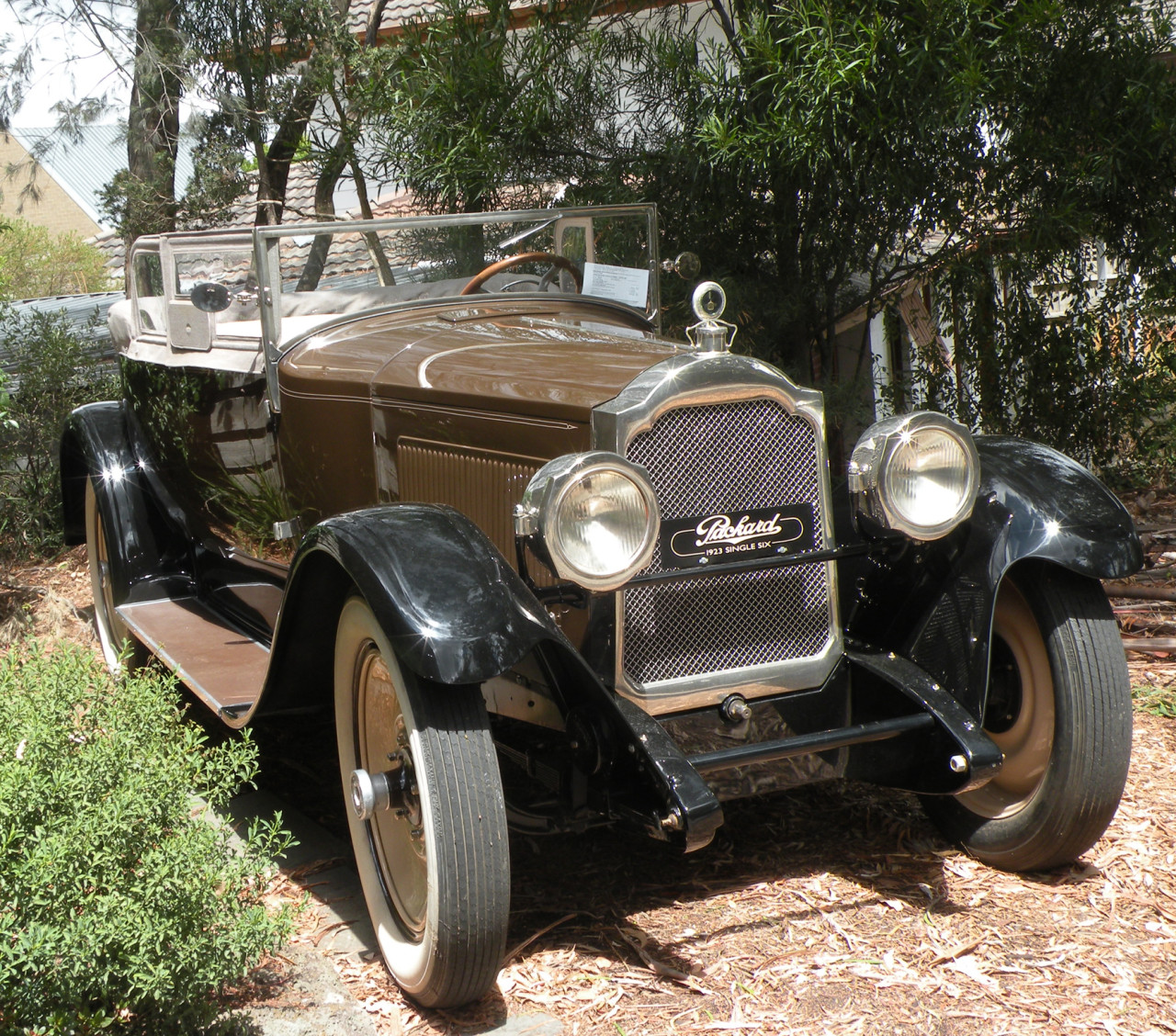
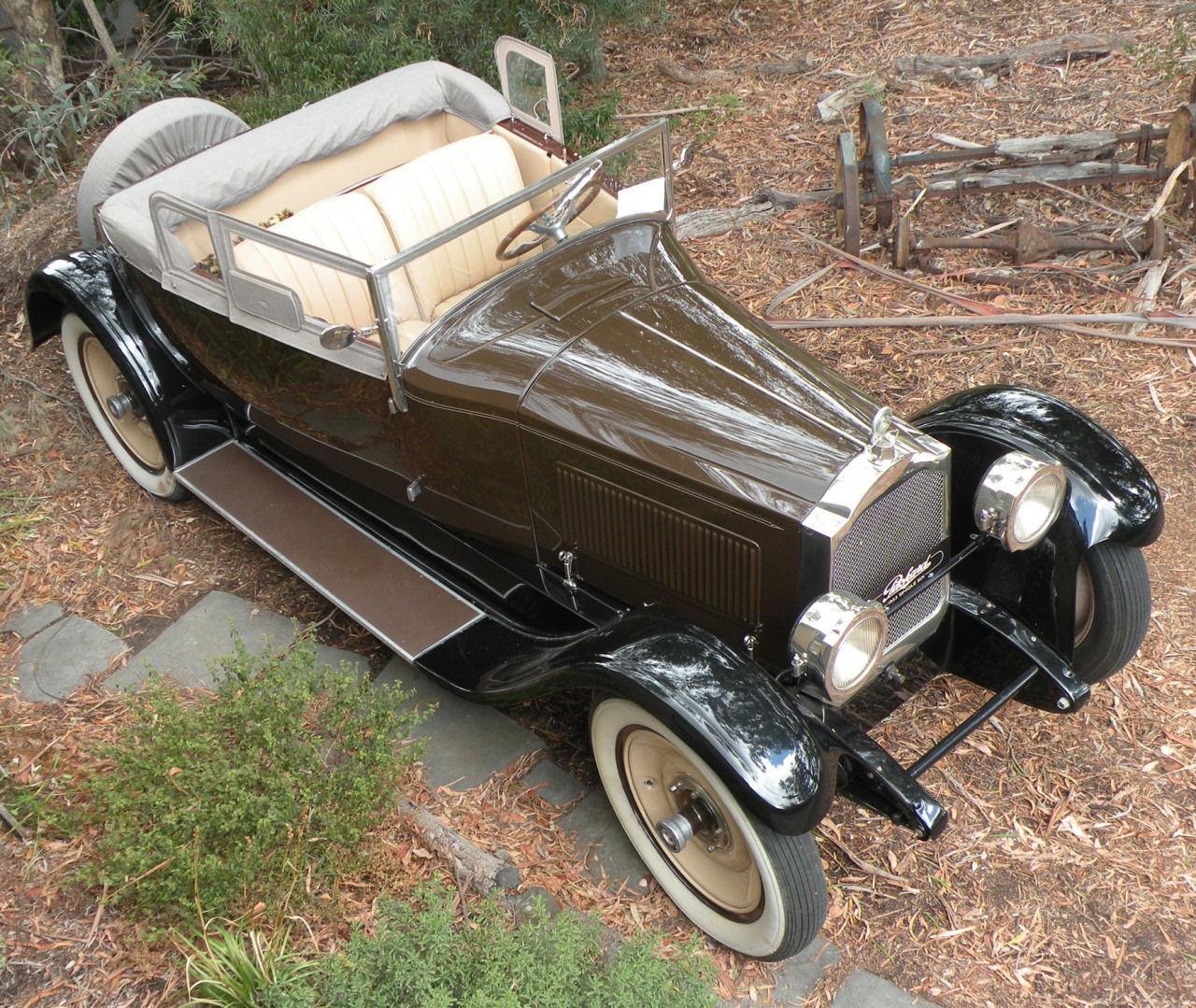
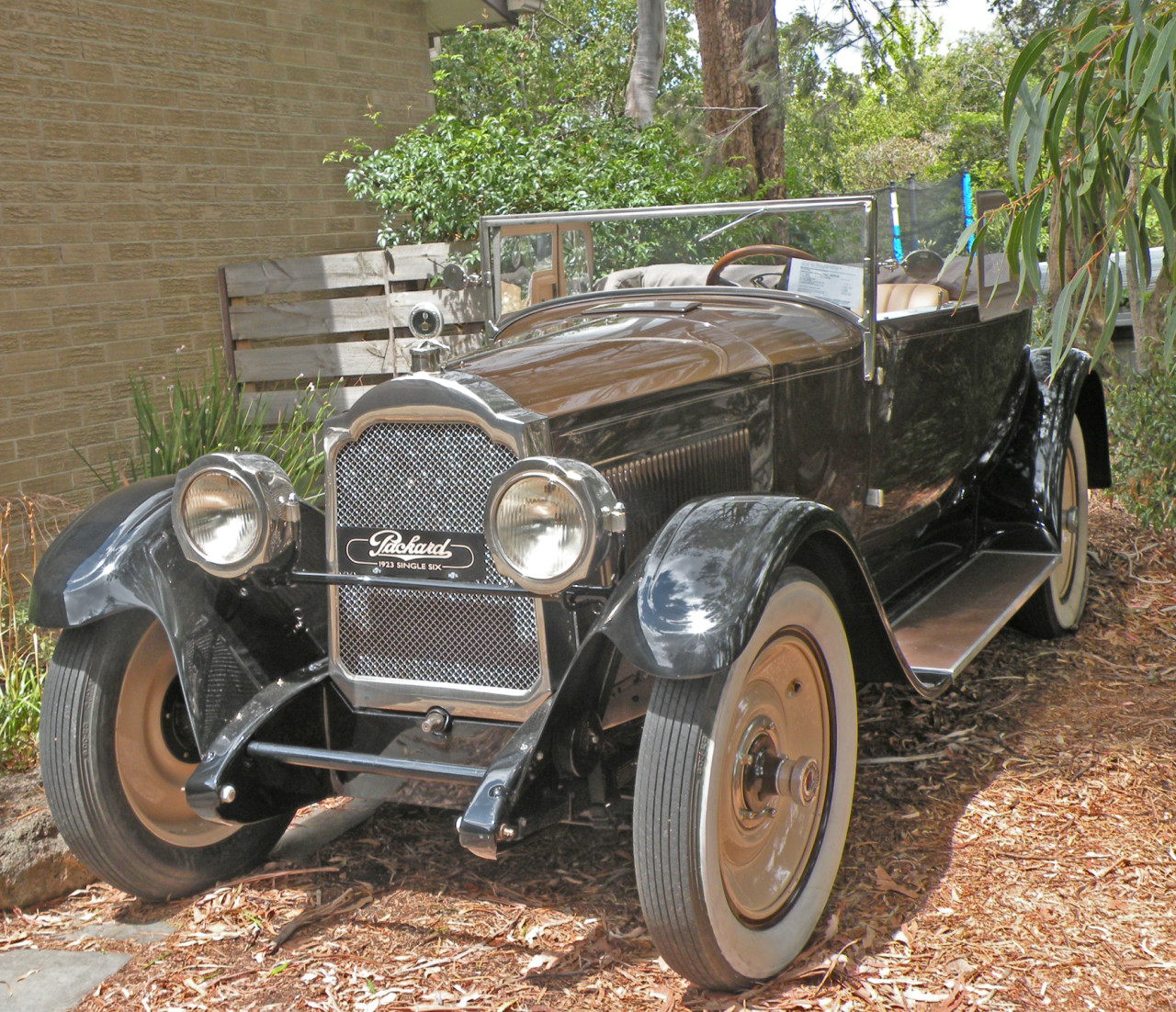
2-4-2013
Hello Donald
The secret with Electric fuel pumps is to get a LOW pressure one. Even with a fuel pressure regulator it is sometimes impossible to get the delivery pressure low enough.This applies in especially to bottom feed float bowls.
Regarding the "Fuelizer" I have mine wired in but not connected. I am using a single modern 6volt coil. I have the original Packard double ended coil but I am uncertain as to its efficiency. The fuelizer end is wound to produce a lower voltage. Having said all that I did spend quite a bit of time on the Vacuum tank before fitting it and before attempting to run the engine.
I have no experience with early (Sloper) SU carbs but certainly the principle of the later SU.s is different. The "piston" regulates the volume of fuel delivered by lifting the tapered needle in the main jet to permit the entry of both more fuel and a corresponding amount of more air by opening up the venturi. In the Packard carb the auxiliary air valve permits the entry of additional air into the mixing chamber so the science is quite different. I will dig out the relevant diagrams to copy and will post them here later.
Having listened to an in depth discussion about the discovery of Richard the Third's remains, I find the effort and the science put into finding them amazing. I am an enthusiastic viewer of the English Television Time Team.
The same principal applies to who ever you are and what ever you are doing, the only way to achieve ultimate success is to
Keep on keeping on
Thanks All for your input.
Back to the Packard Fuelizer V SU Carb question attached are the drawings of the two carbs. I think for the purpose of this exercise you can ignore the section of the SU drawing showing the Downdraught version. As you can see there are a significantly greater number of component parts to the fuelizer.
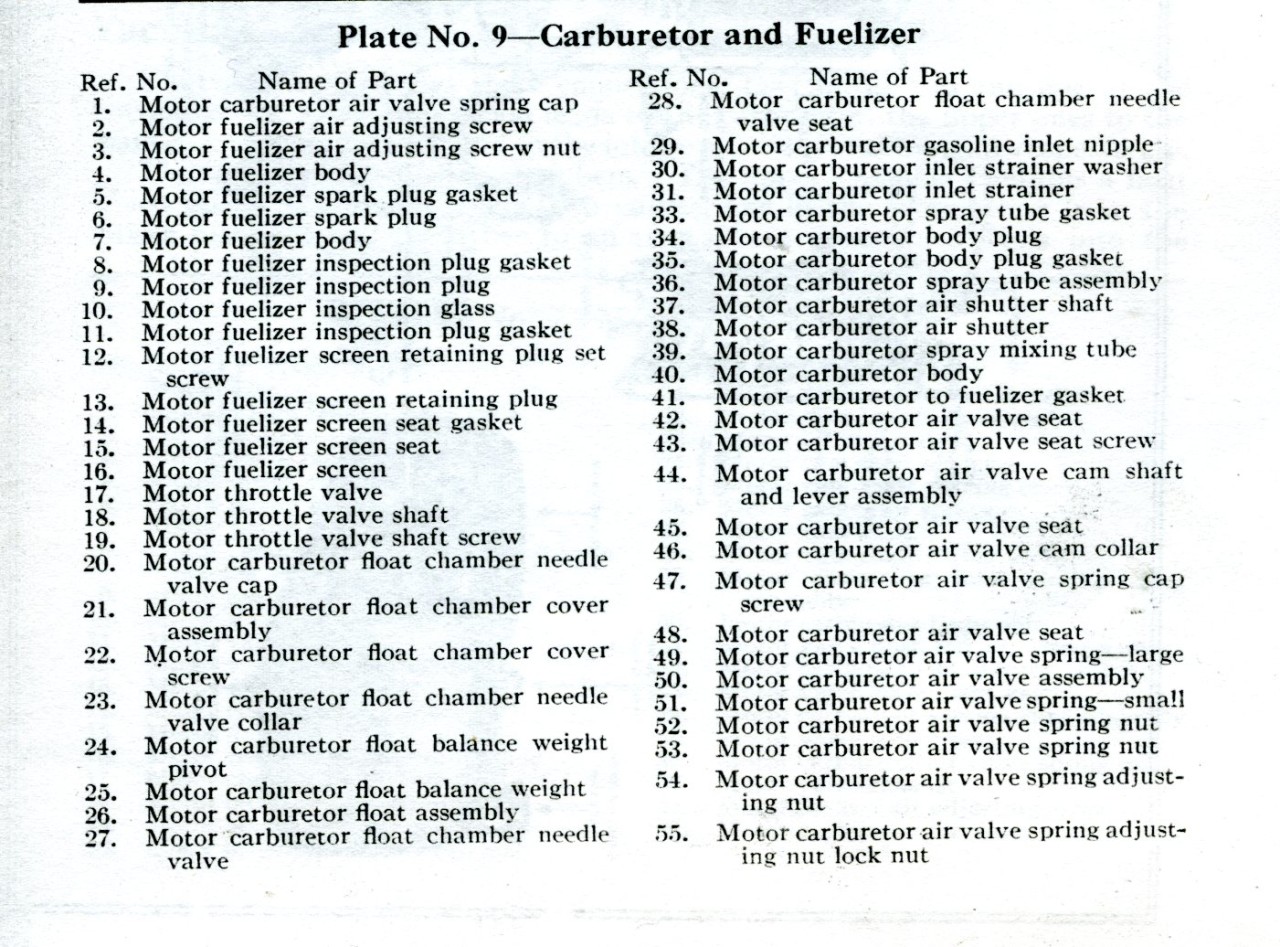
Hope that this helps to clarify rather than confuse. In the Fuelizer preheating chamber the screen (15) is the vital link. This is a fine brass flame proof mesh similar in action to the gauze screen on a Miners (Davey) safety lamp.
NO! there is no provision for a Canary, the tweeting sound usually comes from the fan belt.
Keep on keeping on
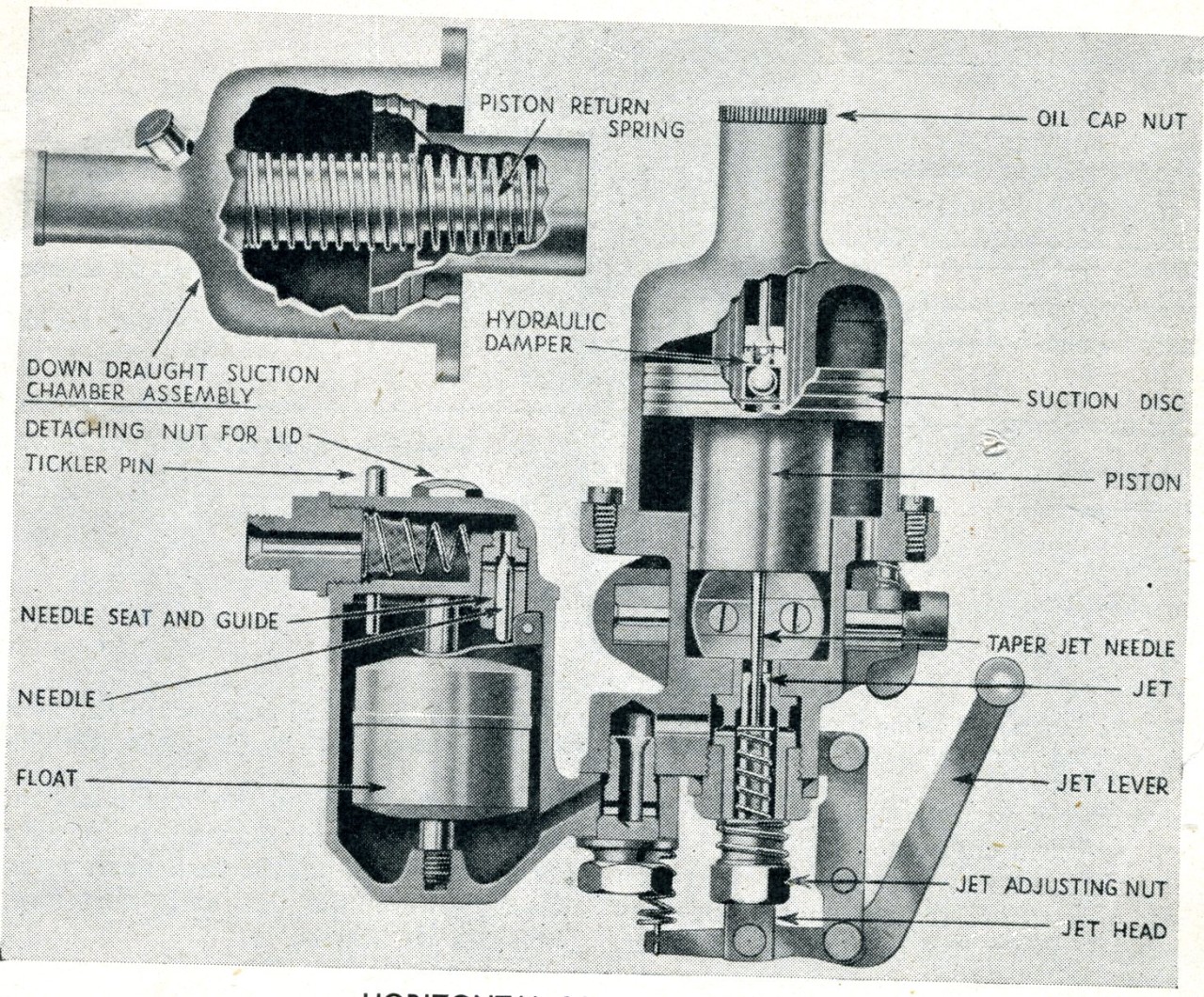
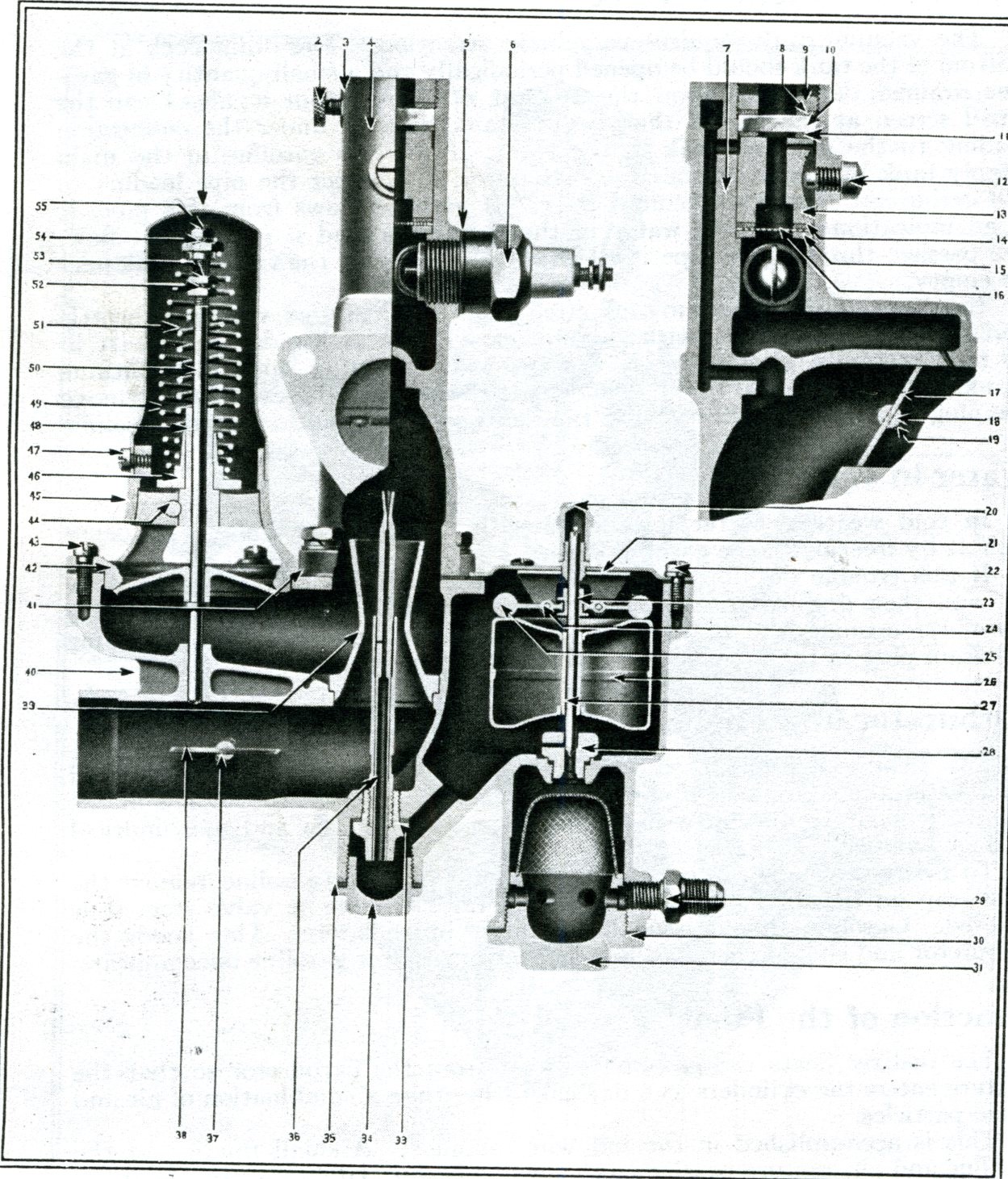
2-5-2013
Wow, Is my face red. Going back a page to #1529 I am bemoaning the problem that I was having with the ignition switch and the missing contact for terminal #2. Only now do I realise that it was never there! The "Operation & Care" manual that I took the wiring diagram from was printed in March 1922 according to the cover but when I look at the wiring diagram it states 1922 to 1924. Therein lies the rub. In small print across the top of the diagram it reads "Note.- On cars before Serial No. 37001 the generator lead was connected to the lower amp-meter terminal instead of No. 2 Switch terminal. My cars Serial (Chassis) number is 28317..... It seems that unwittingly I have up-graded my cars wiring to 1924 spec. Oh well! You learn something every day.
Changing the subject, I have received an e-mail from Donald Ellis asking about Cowl Lights. To the best of my limited knowledge these were not fitted by the factory on the early Series I and II Single Six but they were available as an after market accessory or could have been fitted some years later in an attempt to "up-date" an older car. Donald has sent me a photograph of a pair of cowl lights available in New Zealand. He comments that they are close but not perfect. He has included a pre-restoration photo of his car clearly showing cowl lights fitted. He does not say what happened to these lights but is looking for some guidance. Can anyone help Donald ?
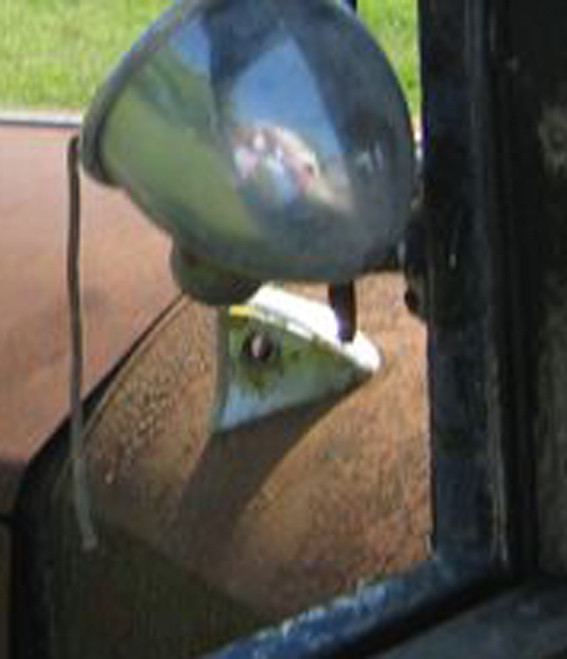
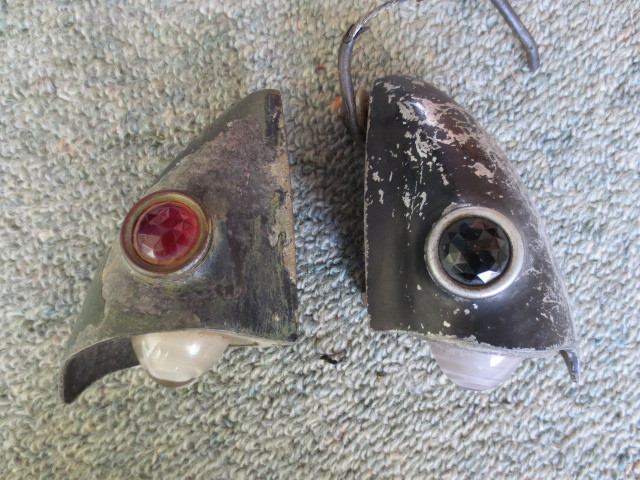
2-10-2013
Donald
My car had the remains of a fuel level gauge in the centre of the tank but as David has pointed out, it is impossible to read with a rear mounted spare wheel possibly even more so with a disk wheel as with a wire spoke. Certainly it would be clearly visible with the spare rim arrangement on a wooden spoke wheel car. I find my fully calibrated wooden dip stick extremely reliable, even with the alarming rate that fuel disappears out of the Packard's tank. I "blanked out" the gauge. For the benefit of all those people who have absolutely no idea what we are talking about, I have attached a photograph of the Fuel gauge (location). Once again I must apologise for all the reflections.
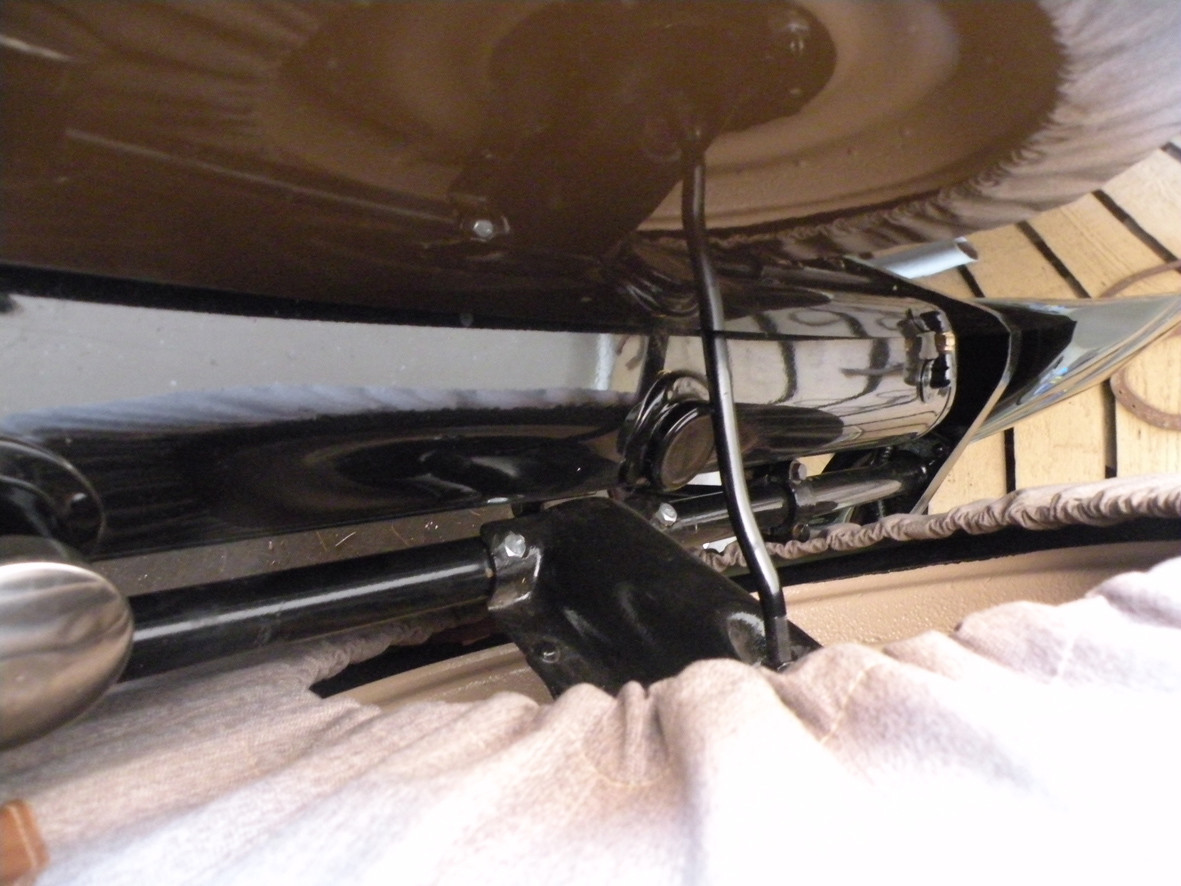
2-12-2013
Today I had the interesting experience of taking the Packard to have its pre-registration Road-worthy Inspection. This could also be referred to demonstration as how to waste three to four hours. Part of the inspection included jacking the car up removing the wheels and photographing the brake mechanism for each wheel including the non existent front brakes. Once this static inspection was complete I was invited to take the "tester" on a road test including a brake test. This involved driving the car down the road, doing a three point U turn and returning back along the same road. Once a road speed of 35 MPH was achieved I was instructed to apply the brakes (as in a panic stop). Both rear wheels emitted a loud screech from the tyres accompanied by some considerable amount of acrid blue tire smoke. The tester's tapley meter recorded an efficiency of just 31%. This he felt was satisfactory in view of the fact that the car has only rear wheel brakes and given that I have some experience in driving older vehicles. Accordingly I was presented with a "green form" which will entitle me to a "red number plate" which will permit me to drive the car up to 45 days each year. In addition to the red numberplate, I am to carry a Government issued Log Book in the car at all times and fill it in with date, likely destination, drivers name and signature, each time before I take the car out and a Brown "Label" which I must adhere to the windscreen.
Wow! That started quite a bit of unexpected comment.
Our (Victoria, Australia) "Club Permit" system has been in operation for a couple of years now in its present form. Previously there was no log book but use was restricted to Club events. The Club had to be one recognised by the State Licensing Authority. Now the system has changed to the Log Book and you can use the car for private use as well as Club events BUT again you must be a financial member of a recognised Club. If you are apprehended driving without having filled in your Log Book for that day you are charged as if driving a unregistered & uninsured (3rd Party) car as Ian has mentioned the fines are significant. The Club must keep a Register of members using a Club Permit and notify the Authority if the member fails to renew their membership and that persons "Permit" is revoked. Our Registration/Permit fees include Third Party (personal injury) insurance. With the Club Permit you can opt for either 45 or 90 days, the total cost for 45 days use is $67.60 by comparison 2 litres of milk costs around $4 and a litre of petrol costs between $1.35 to $1.55 depending on the day you buy it and the octane rating. Octane ratings are 92, 95 and 98. Fuel prices can vary by up to 8/10 cents per litre on any given day. Weekends and public holidays tend to attract higher fuel charges.
The Packard (5:1 Comp) will run very happily on 92 while the Lagonda (9.5:1 Comp) is more fussy and prefers 98. Each State has it's own system of Registration (Road Tax) and Insurance. Comprehensive (Accident, Fire and Theft) Insurance is optional in Victoria. Under this system you can drive your Veteran, Vintage or Classic car (over 25 years old) on any day of your choosing up to 45 or 90 days per year depending on which option you choose (and pay for). Living in the Best State in the Best Country in the World, we do not have to worry about being snowed in or flooded out. We do have our regular annual Bush (Wild) Fire season but you simply don't go there during days of Extreme Fire Risk (usually over 35/40 degrees C).
2-13-2013
Hi Donald
It really is quite straight forward provided you take a deep breath before starting.
On another front and before I become too entangled in red tape I have taken yet another tiny step towards the conclusion of the Packard saga.
This afternoon I called into the engraver who has done similar things for me in the past and collected the bulkhead plate for the Packard. This is the first car in recent memory that I have completely restored without giving it a name. It is simply known as "the Packard" I think that they have done a great job capturing the art 1920s styling for the corners of the border. Very similar to the corners of the glass dome in the interior light.
The question is should it go on the right hand end of the dashboard or on the bulkhead under the hood (bonnet) on the left hand side? A third suggestion is on the inside of the bulkhead above the cast aluminium toe board.
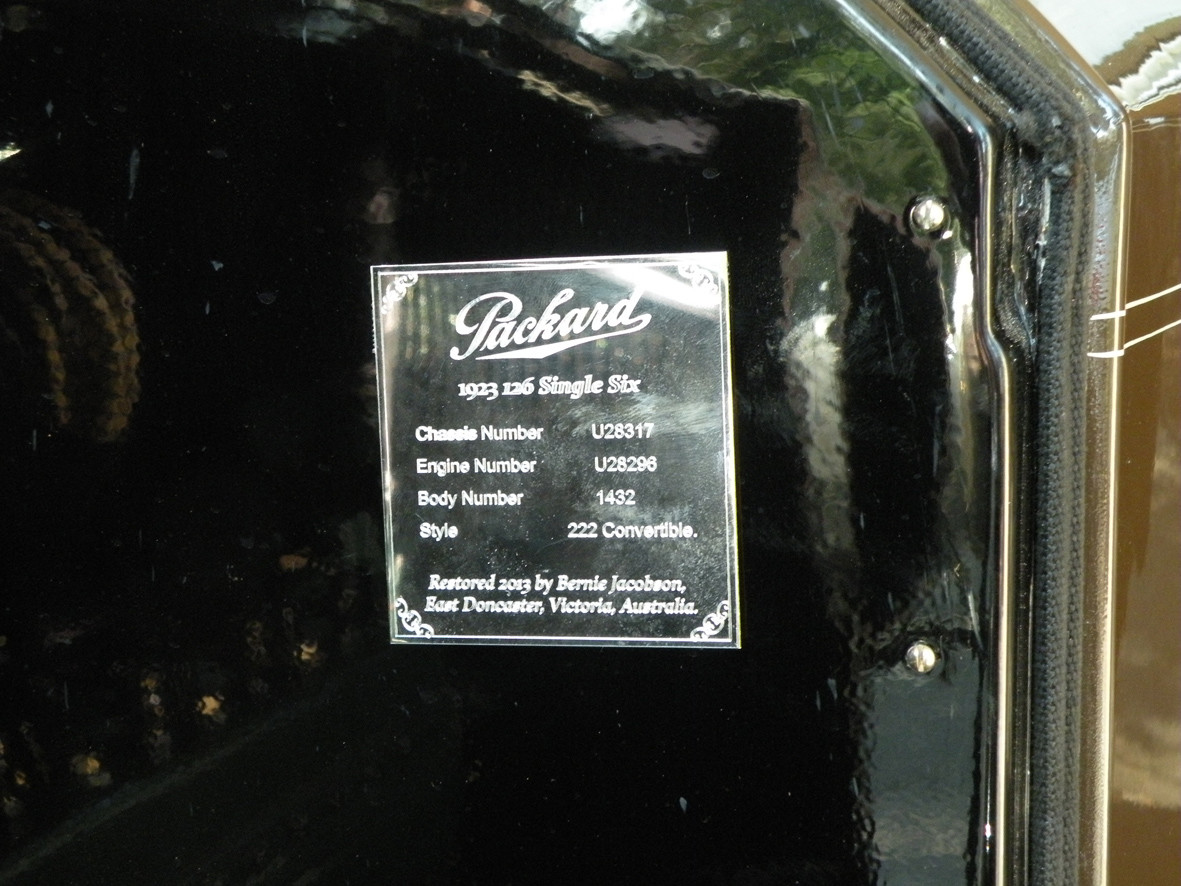
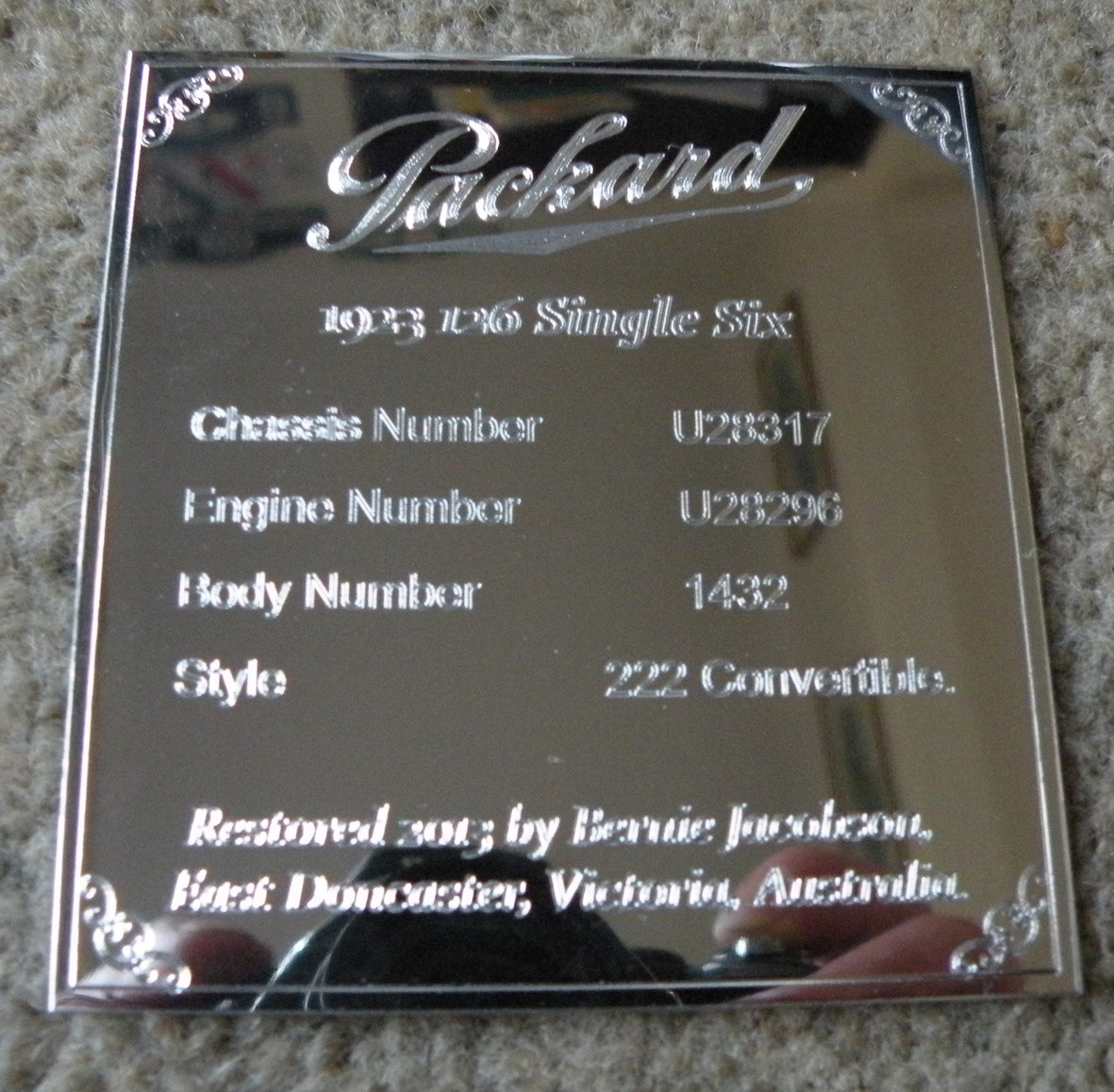
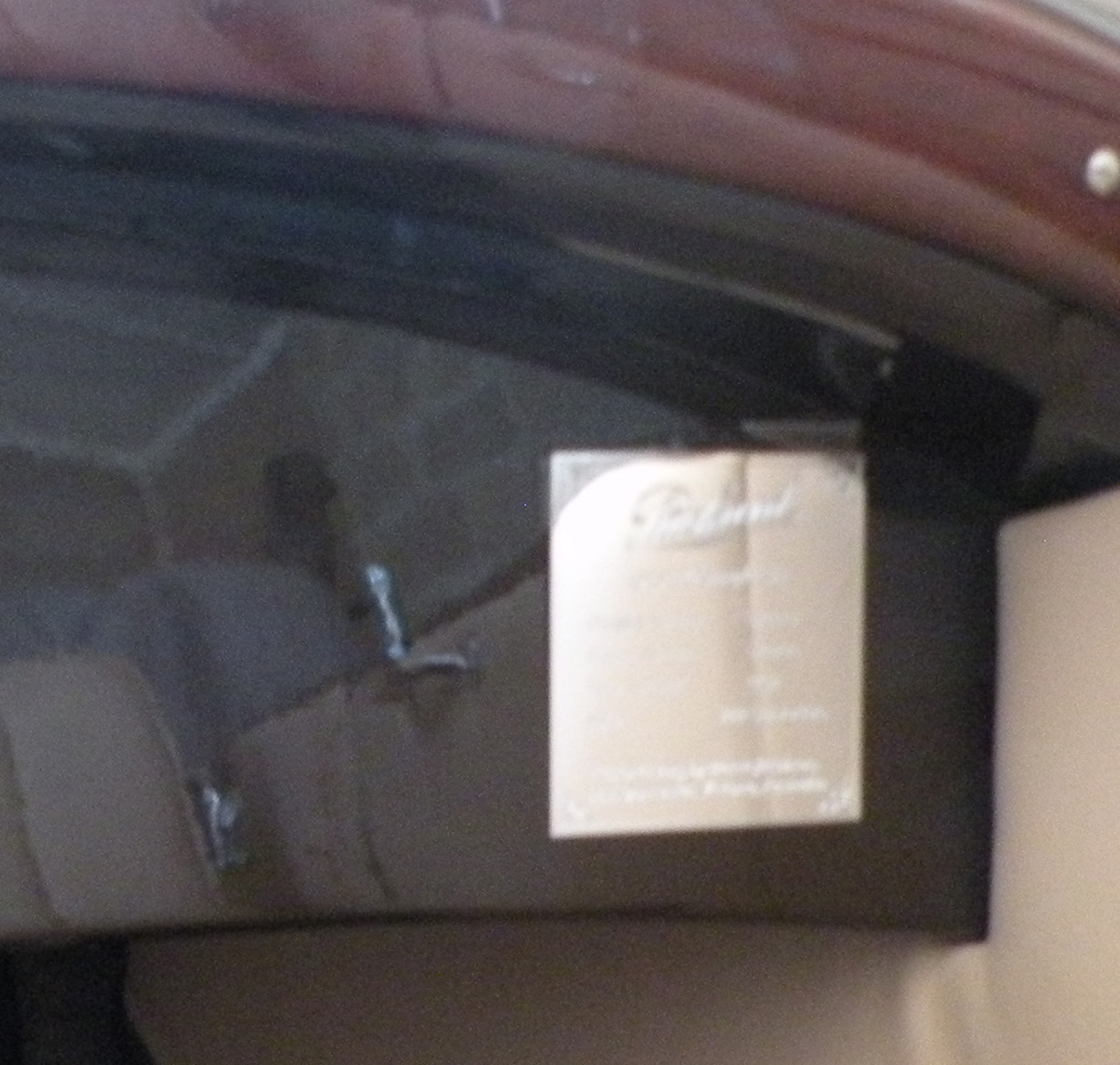
2-18-2013
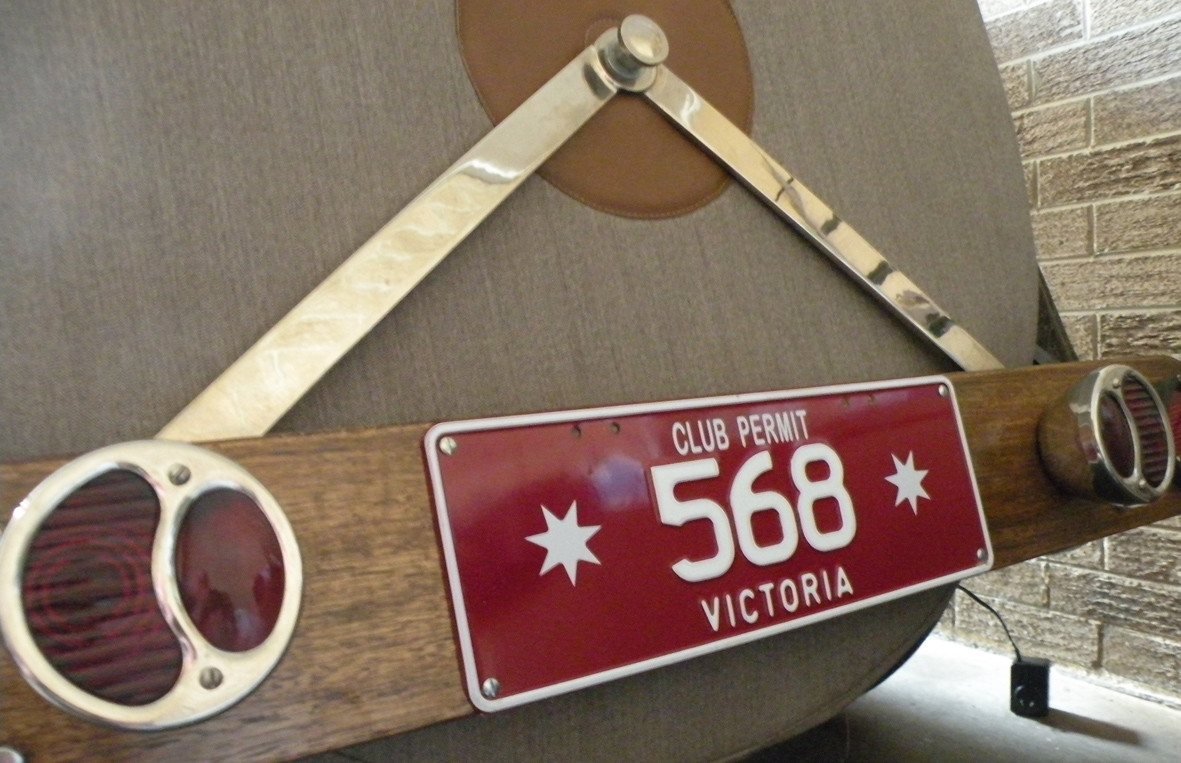
One is tempted to say "The End" but as anybody who has done a major restoration will tell you, you are never quite finished.
2-20-2013
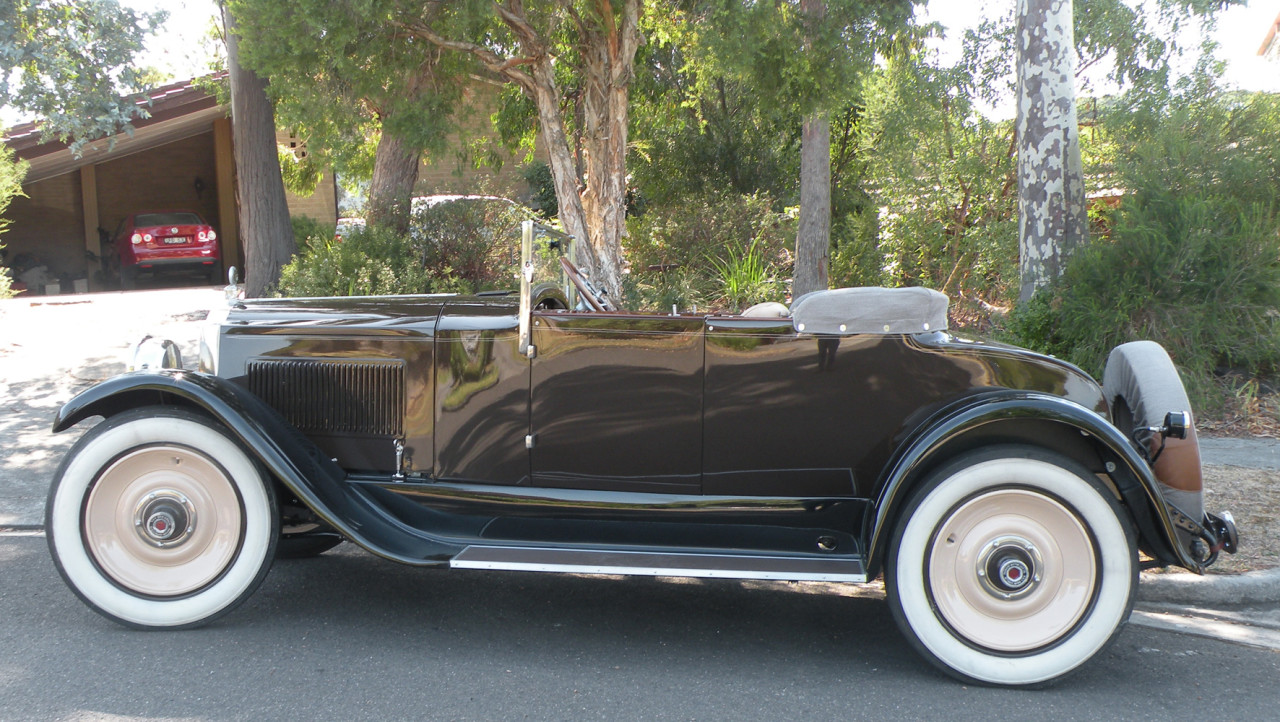
In reply to my advertisement on the 'Prewar Car' website originating out of Belgium an American collector requested that I send him these additional photographs. I thought that I should share them with you.
The car is currently advertised at 85.000. Euros To save you rushing for your calculator that is near enough to $110.000
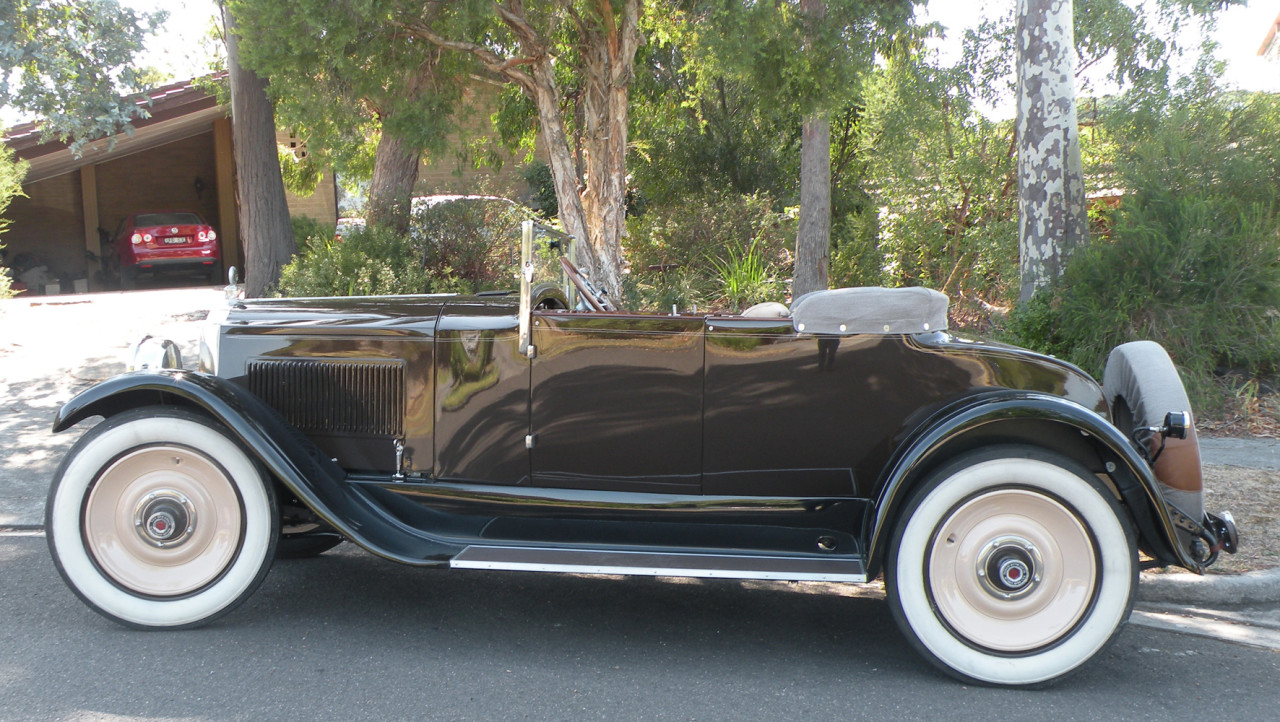
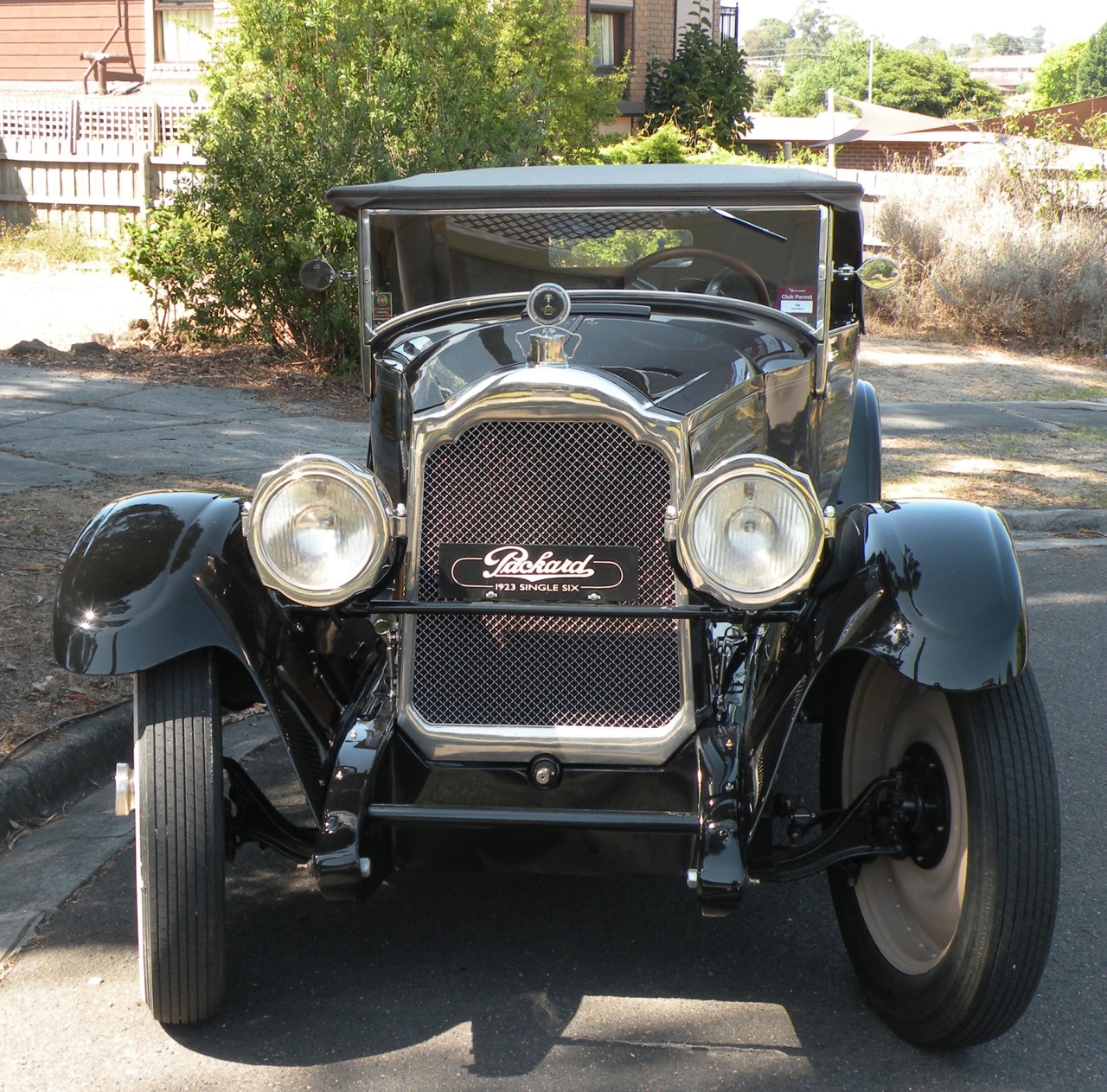
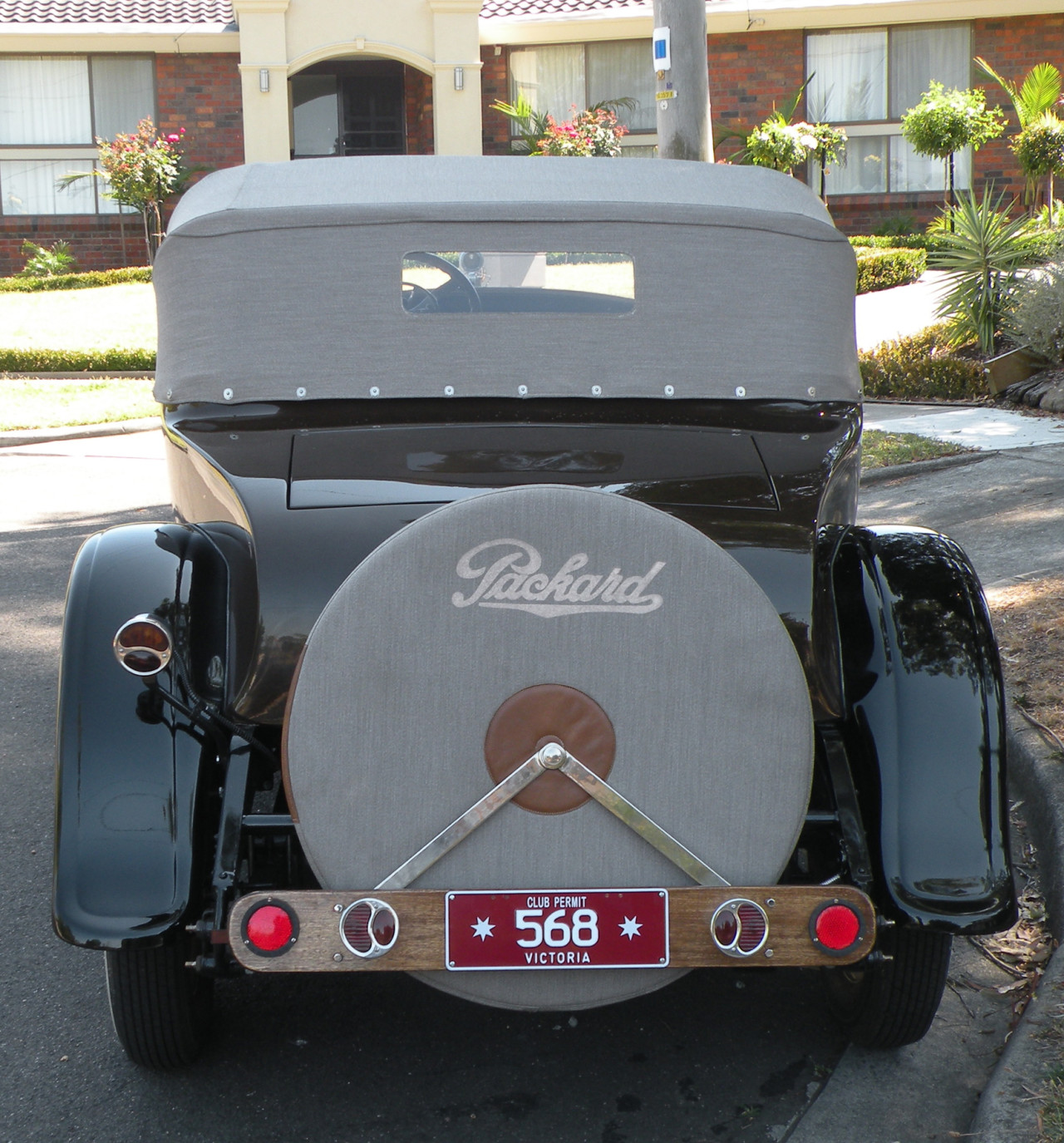
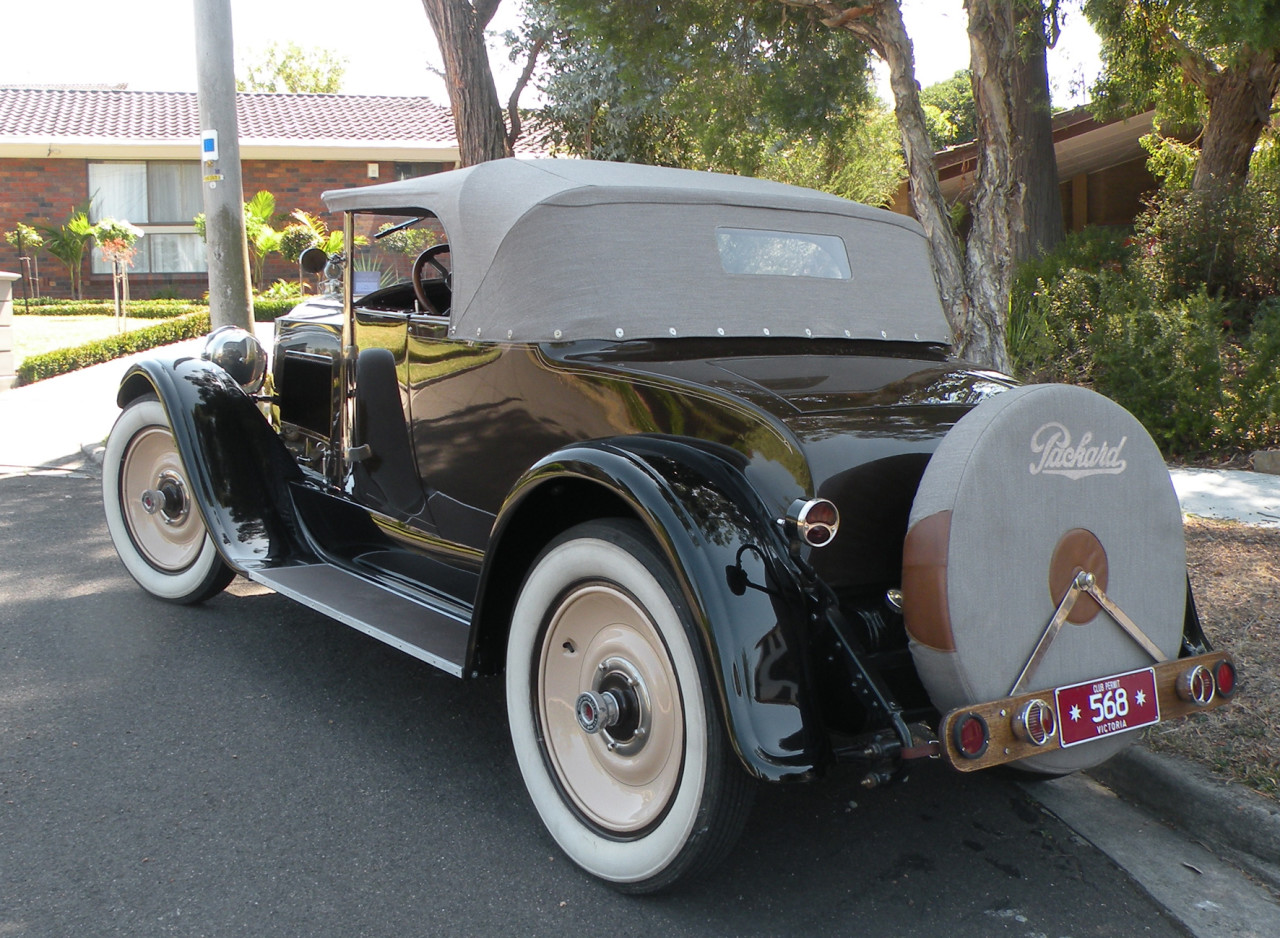
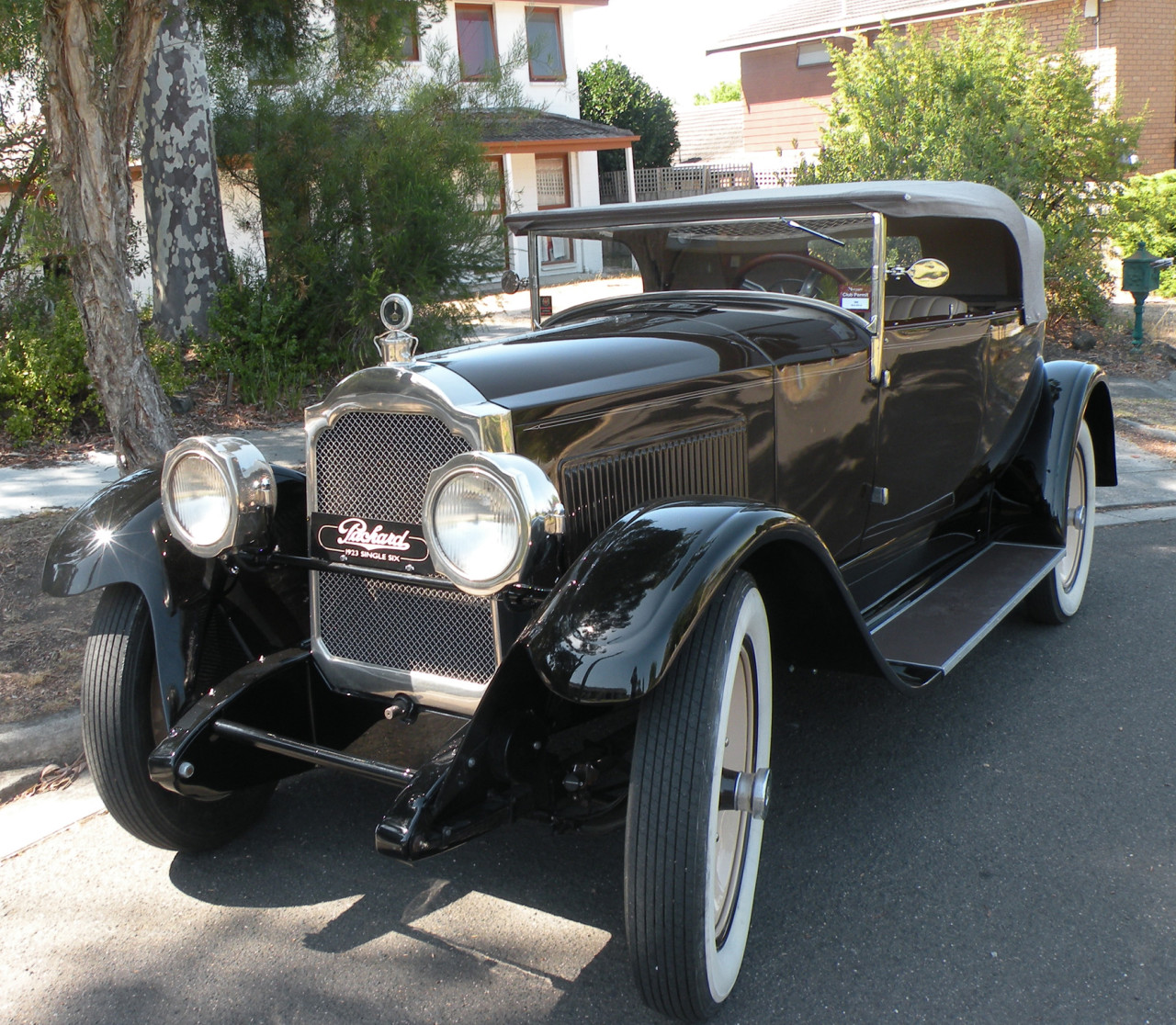
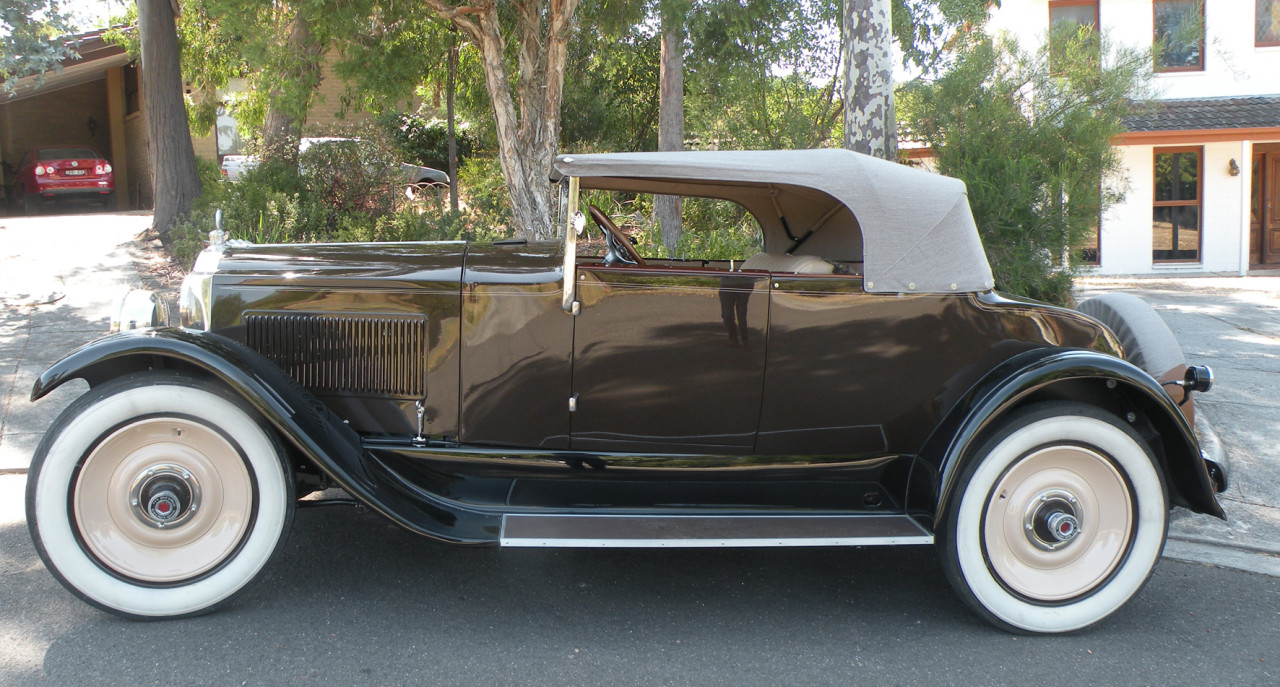
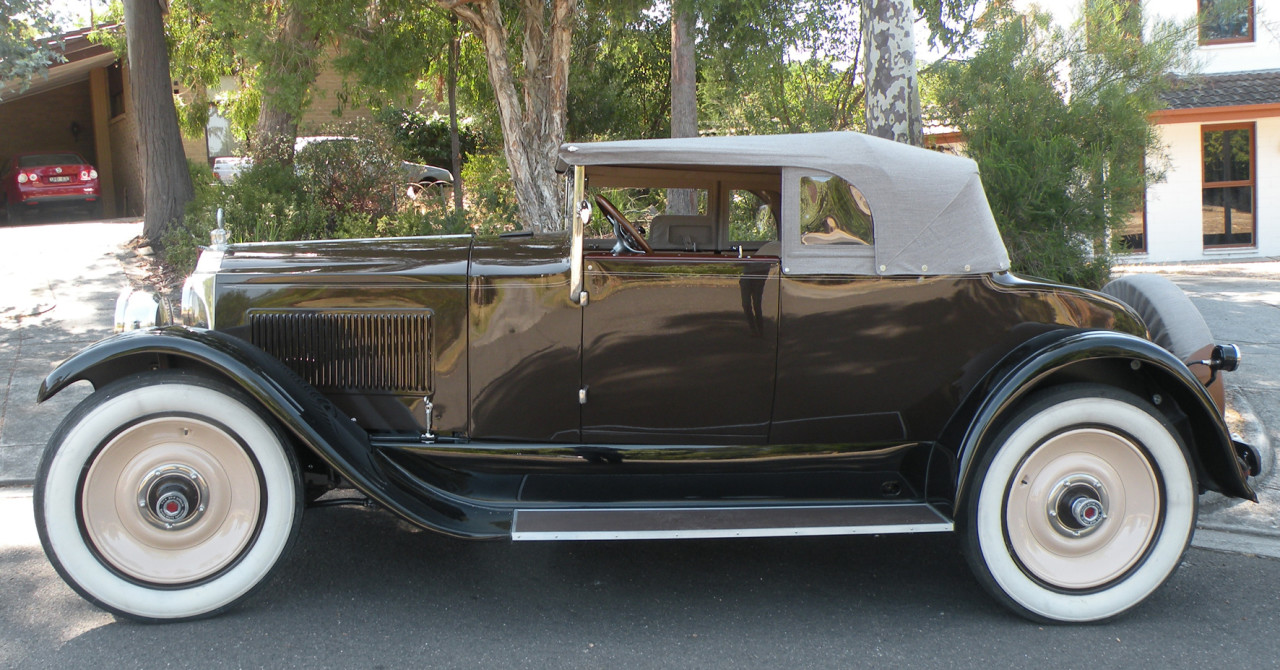
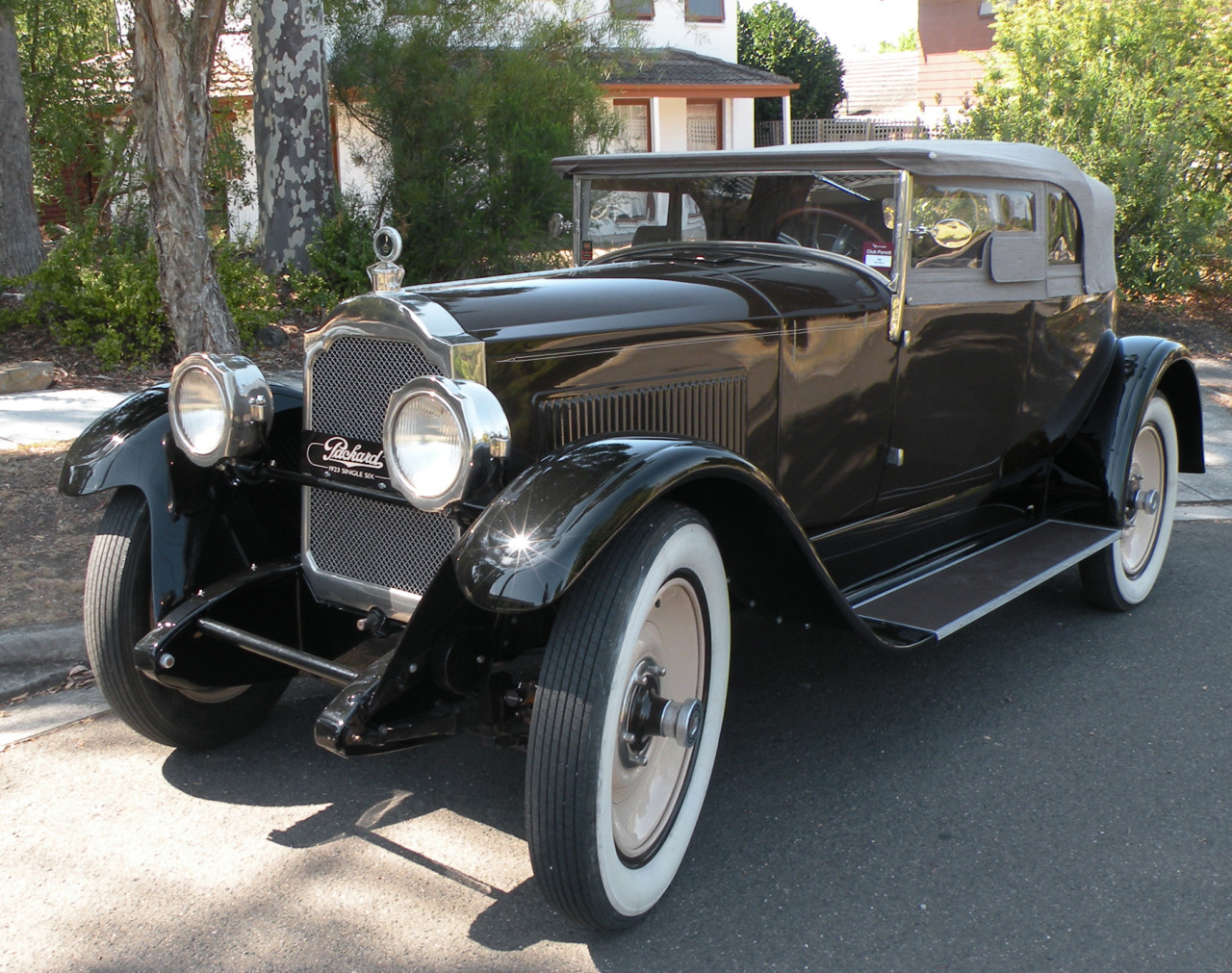
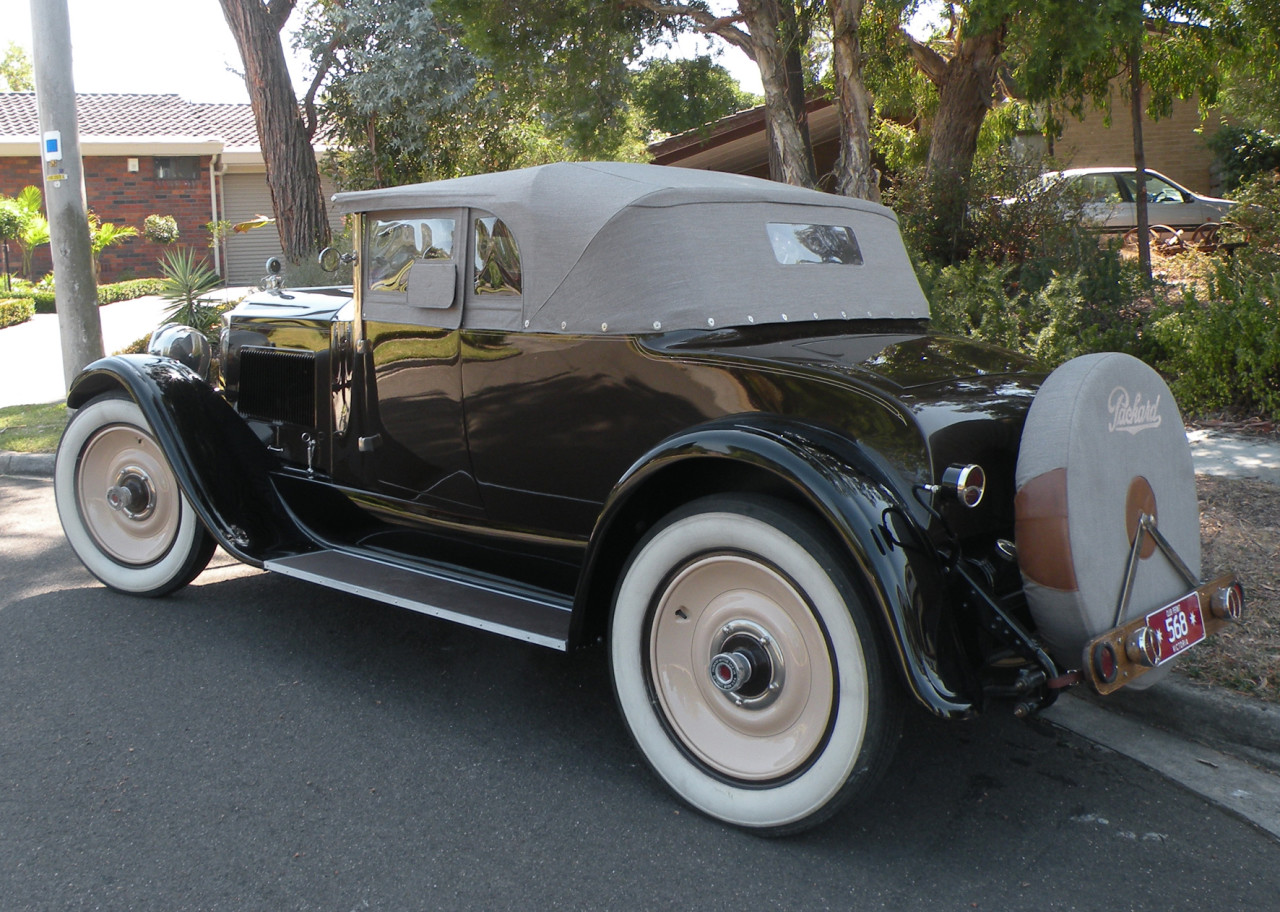
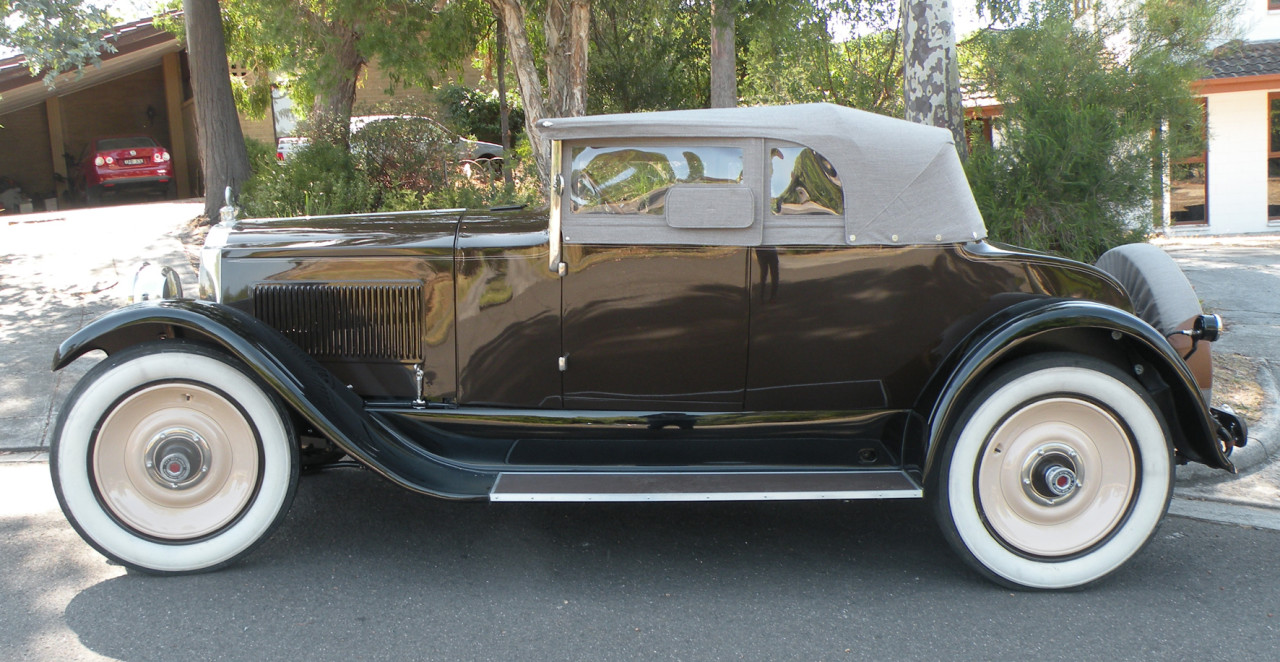
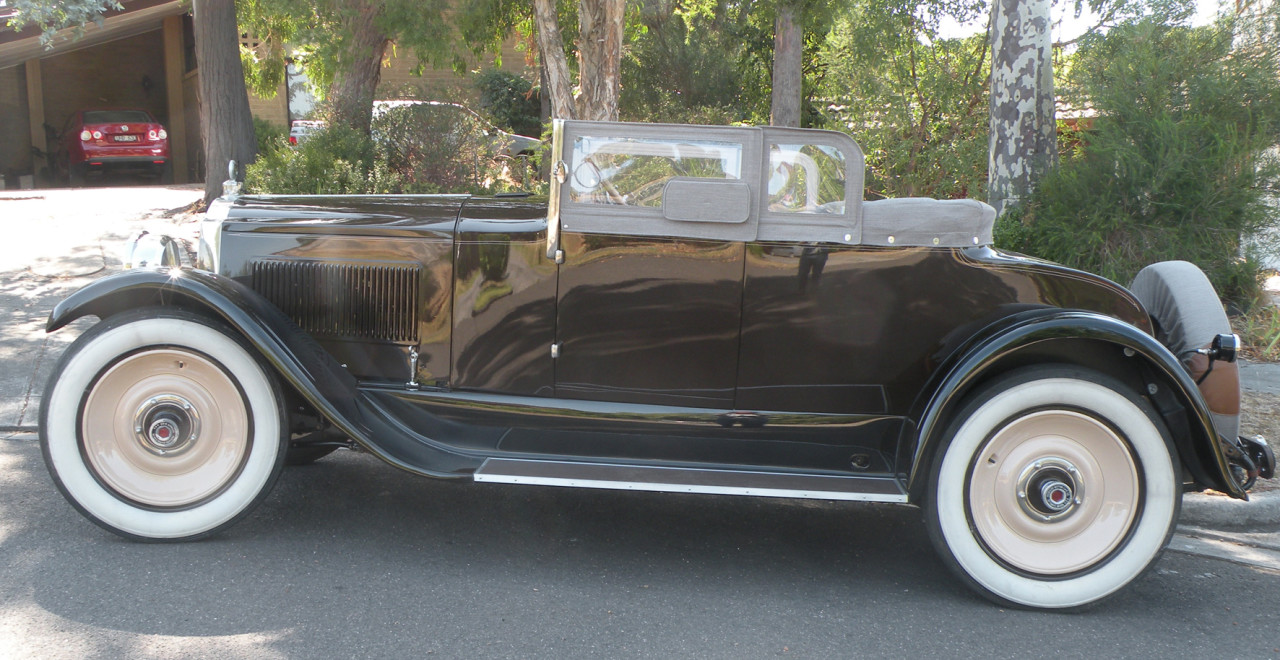
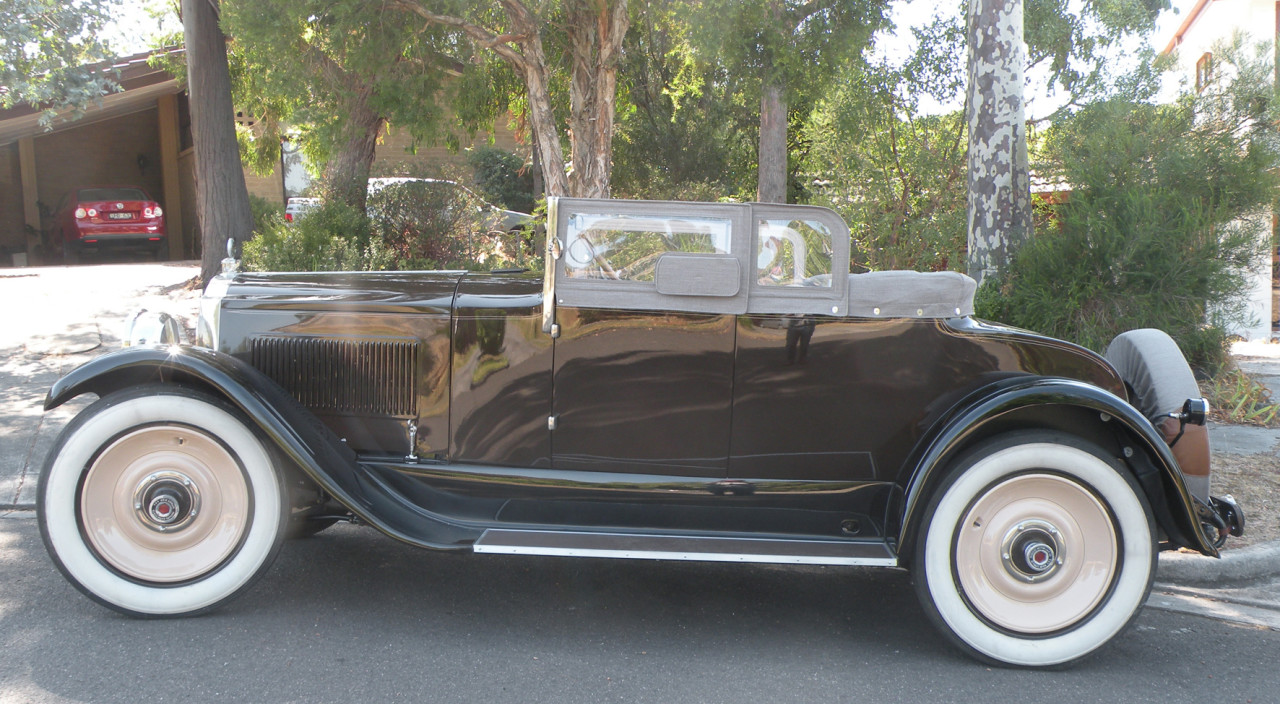
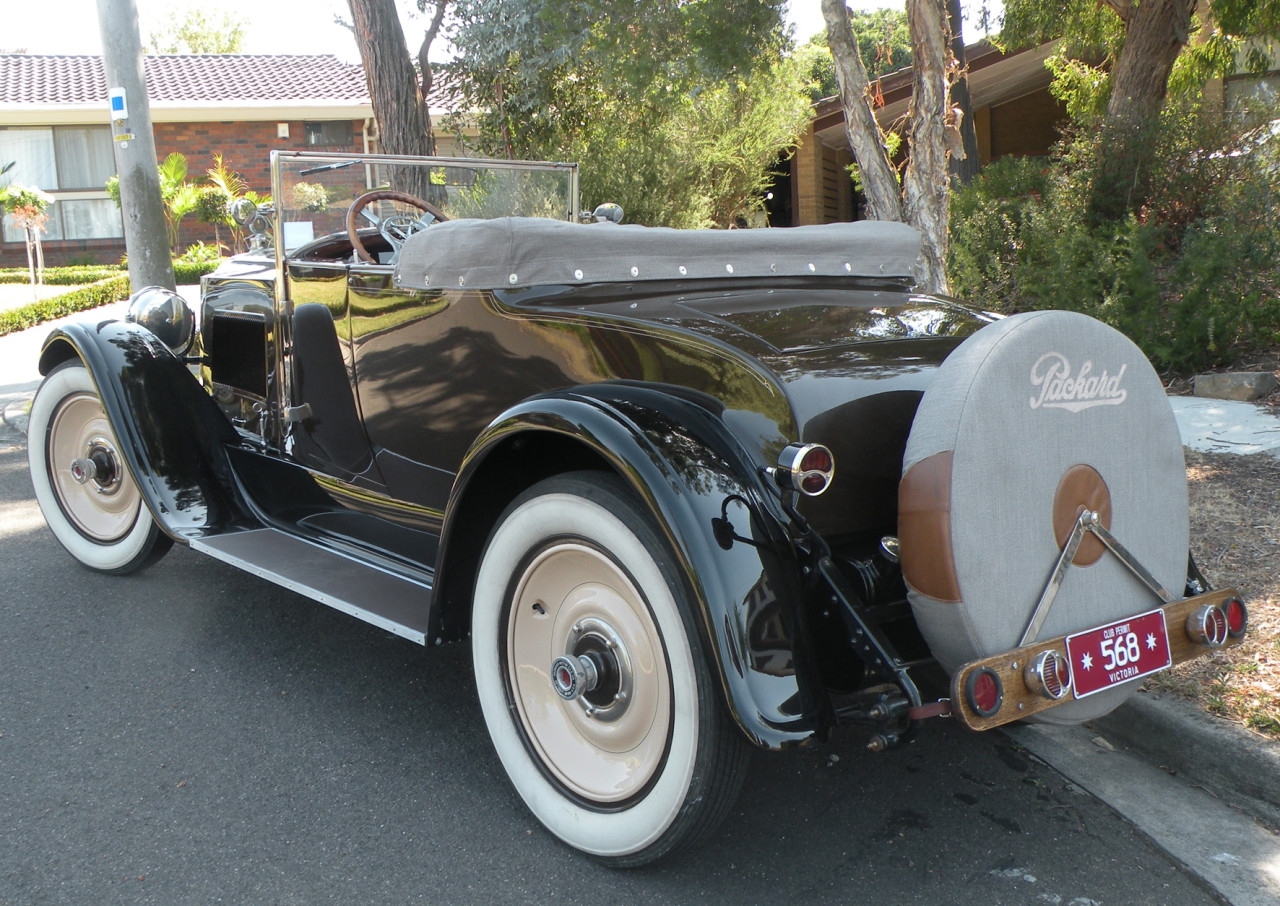
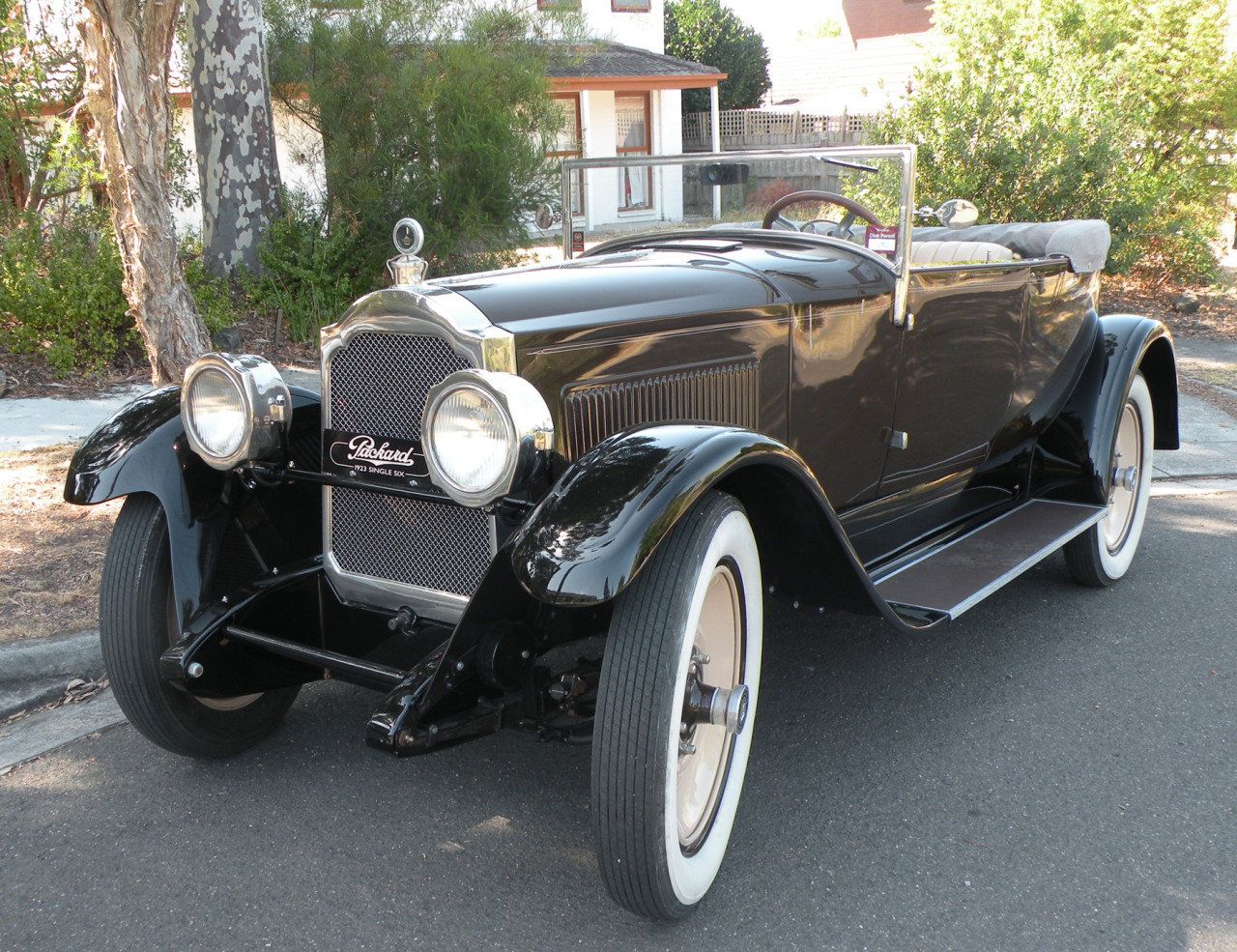
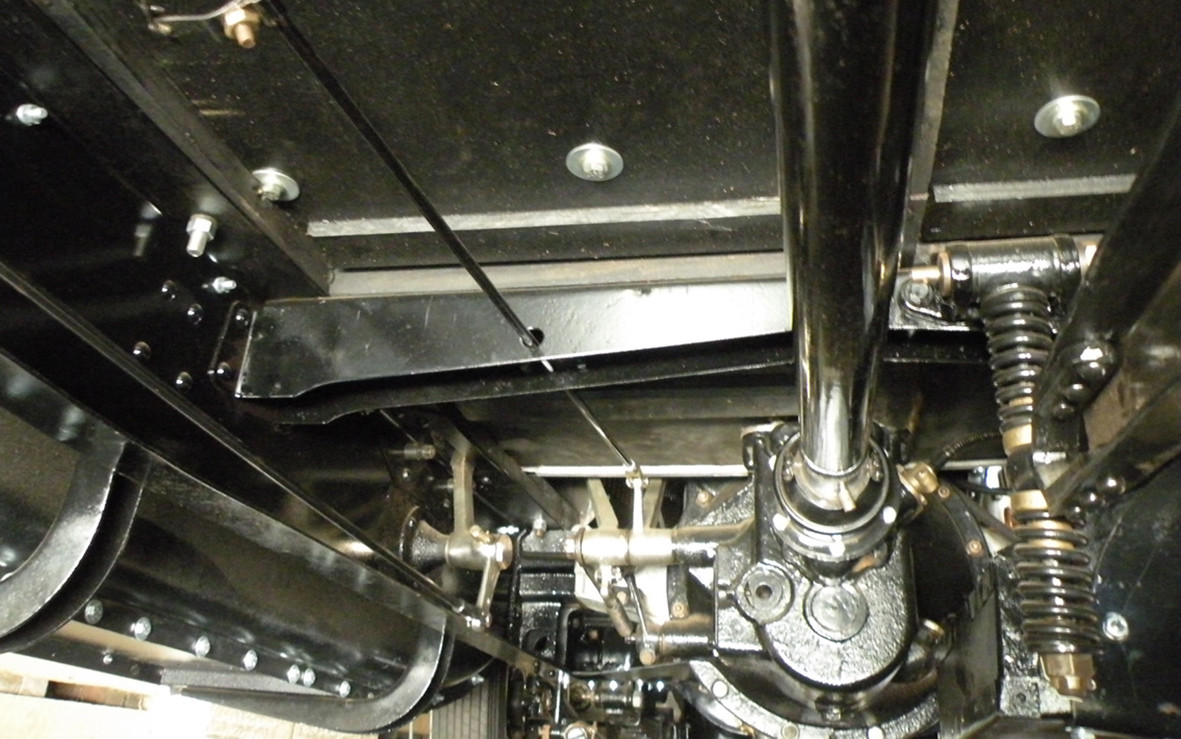
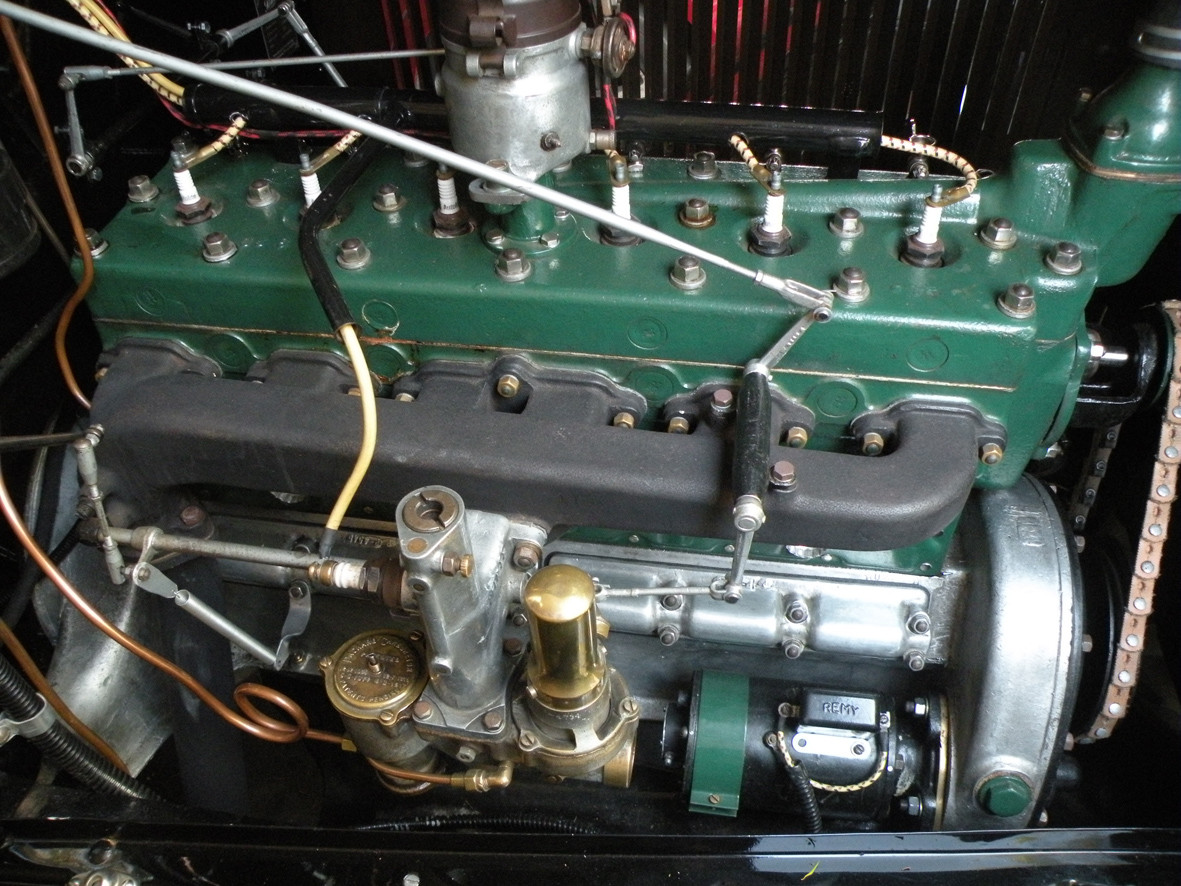
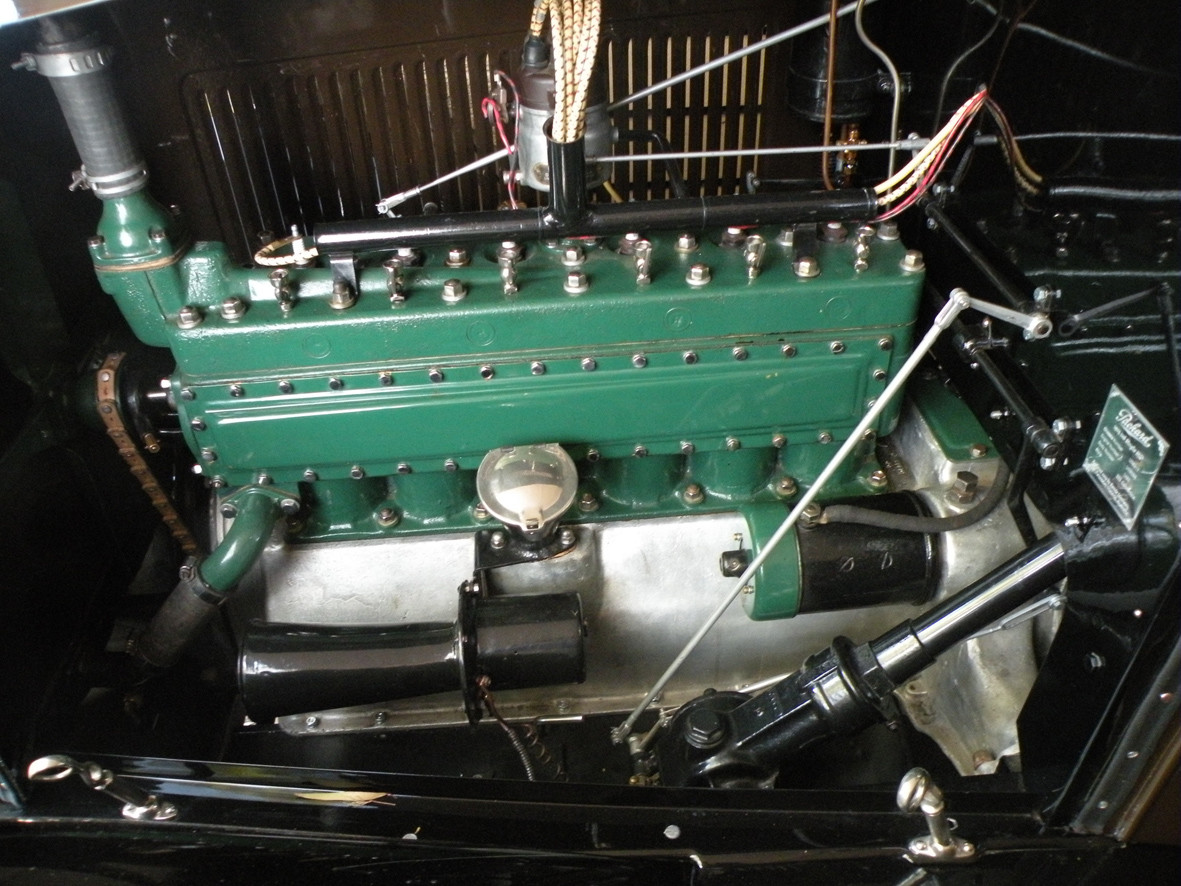
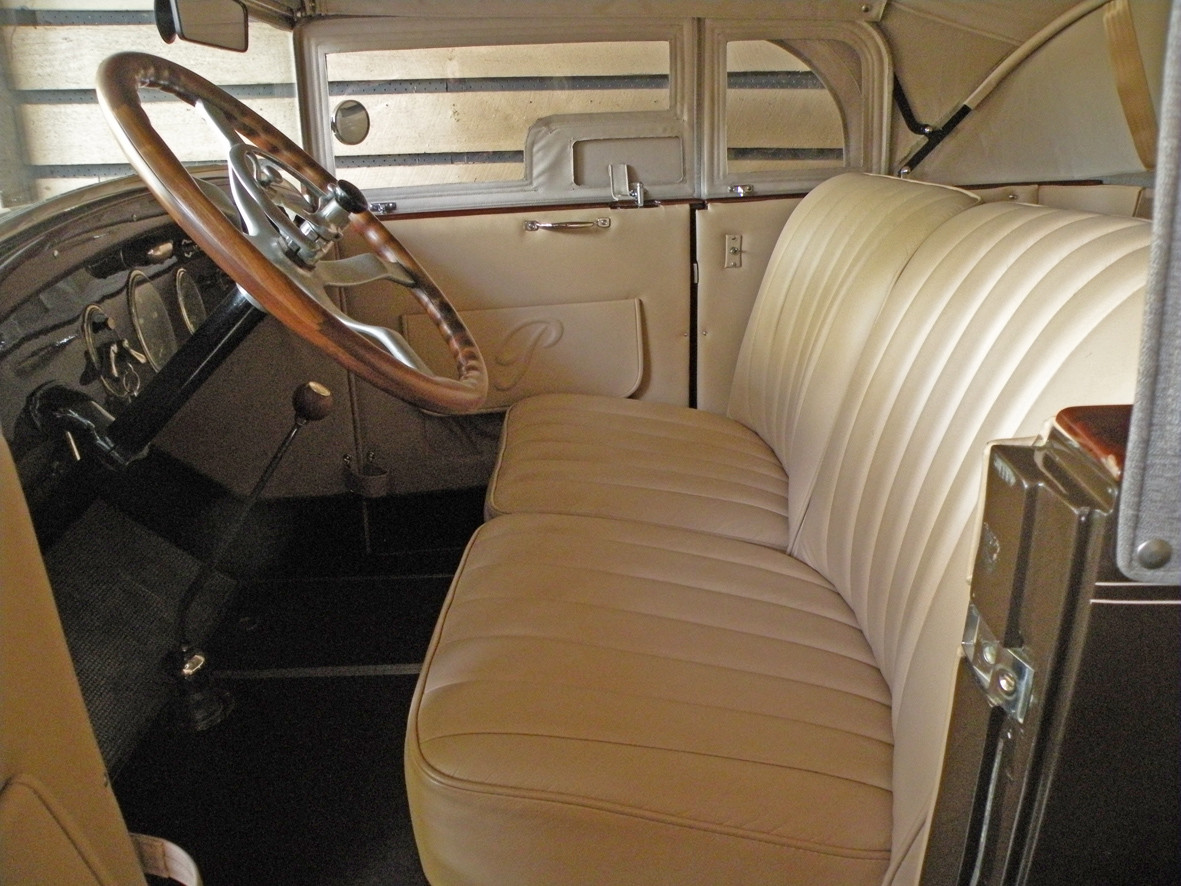

bravo!
Posted by CCmyVW on 1/26/20 @ 5:30:36 PM